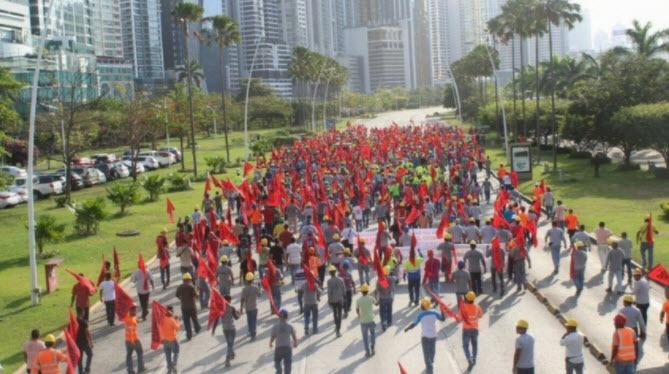The strike by the unionized construction workers has paralyzed over 90 percent of construction projects in Panama.
A strike organized by Panama’s Sole Union of Construction and Similar Industries Workers (Suntracs) has entered its fourth week after negotiations with the Panamanian Chamber of Construction (Capac) and finally they resolved their differnces.
The decision to reject state arbitration, which would have ended the strike while representatives negotiate, was made in a general assembly Tuesday. After the meeting workers marched to Capac headquarters to demand fair wages. Capac favors the arbitration proposed by president Juan Carlos Varela, arguing the measure seeks to suspend the strike to avoid a crisis in the construction sector and the country’s economy.
However, workers had agreed to remain on strike until they reach a favorable agreement. The strike by the unionized construction workers has paralyzed over 90 percent of construction projects in Panama.
Suntracs launched the strike on April 18 after construction bosses offered a 0.5 percent increase in their wages, which they claim is insufficient to live a dignified life. As a counteroffer, Suntracs demanded a 15 percent increase.
After several attempts to negotiate the two side haven’t been able to agree on new wages. Suntracts have lowered their demand from 15 to 9 percent, but Capac has only been willing to increase their offer to 3 percent.
According to a public statement issued by Suntracs the constructions industry is one of the most profitable in the country, “generating over US $36 billion in the last four years, of which US$ 30 billion have been profit for construction businessmen.” The union argues less profitable sectors in the country have registered wage increases averaging 14 percent.
“They can’t pocket US$30 billion and arrive at the table with four and five cents,” Mendez said.
Economist William Hughes recently stated that the workers’ proposal was fair since it relied on official data, which showed that 85 percent for the profit generated by the construction sector goes to the business owners while workers’ salaries in some cases didn’t cover the cost of living for an average family.
So now it is back to work.
